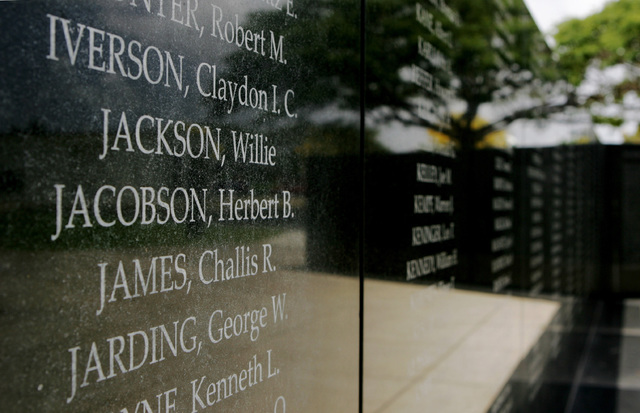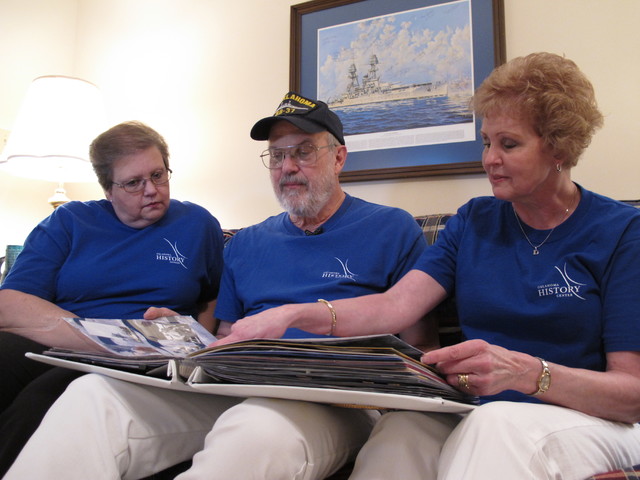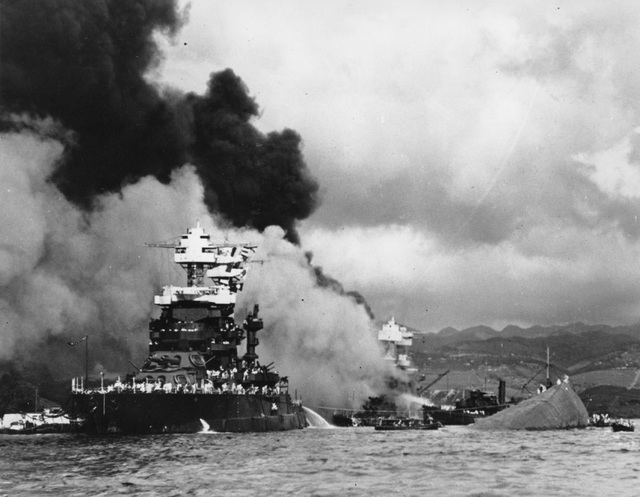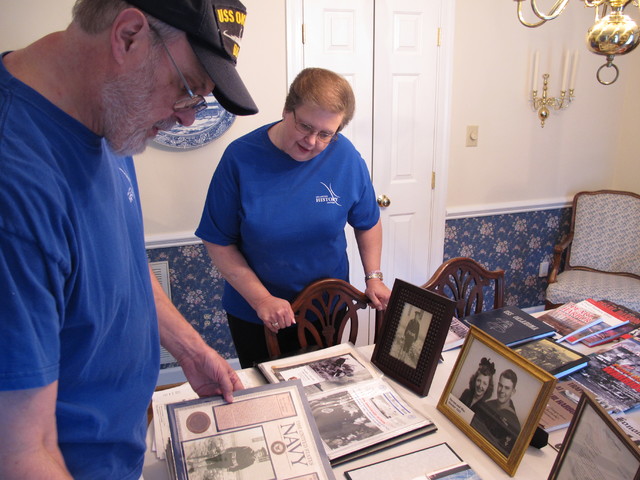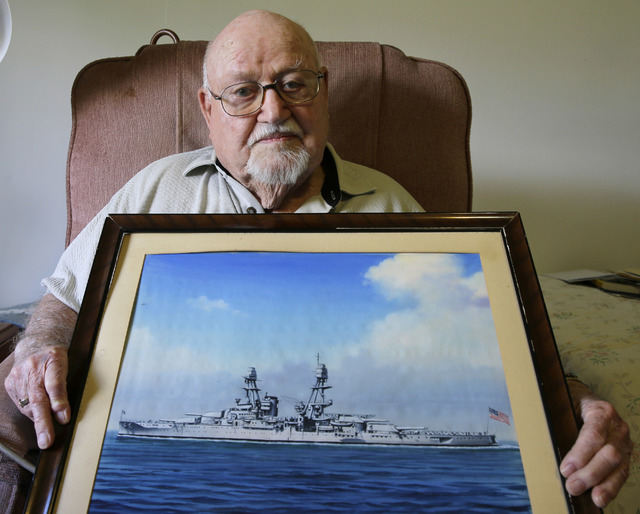Pearl Harbor kin seek ID tests, closure
CARY, N.C. — Dawn Silsbee and her siblings never knew their Uncle Bert — he died years before they were born. But they saw what his loss did to their family.
ADVERTISING
“Our grandmother openly wept, every year — every Dec. 7,” the North Carolina woman said. “And I think part of it was because she really didn’t know where Bert was.”
Bert Jacobson’s family has always known the details of his death: That he went down on the USS Oklahoma during the Japanese attack on Pearl Harbor. But his remains — and those of more than 400 other sailors and Marines who died on the battleship that day — were never identified, and were instead commingled in a dormant volcanic crater a few miles from Pearl.
Now, nearly three-quarters of a century after that day of “infamy,” their families might soon get the closure Bert Jacobson’s mother was denied.
Last month, the Department of Defense announced plans to exhume the Oklahoma remains at the National Memorial Cemetery of the Pacific in Honolulu, commonly known as the Punchbowl. Work is expected to begin in a few weeks, after the state health department issues the permits.
“We now have the ability to forensically test these remains and produce the identifications,” says Debra Prince Zinni, a forensic anthropologist and laboratory manager at the Defense POW/MIA Accounting Agency in Hawaii. “They just did not have the same capabilities back in the ’40s when these remains were recovered.”
Past attempts to identify casualties of the Dec. 7, 1941, attack have ended in failure. And this renewed effort has spawned a debate over how best to honor their sacrifice and, in effect, whether these men belong to the families or to the nation.
In a way, Silsbee and her siblings — Bradley McDonald and Colleen Williams — owe their Uncle Bert everything.
During boot camp at Great Lakes Naval Training Station, Jacobson became fast friends with O.C. McDonald, an orphan from South Dakota. During a visit to Bert’s home in Grayslake, Illinois, “Mac” fell in love with Jacobson’s sister, Norma.
“If he hadn’t brought my dad home to meet his sister, my mother, we — the three of us — would not be here,” Williams said as she balanced in her lap a scrapbook dedicated to Bert and her father.
At Navy tech school, Jacobson and McDonald formed one half of a group of buddies that called themselves “The Four Musketeers.” The others were Henry Ford II, grandson of the car magnate, and Chet Jankowski.
When training was through and assignments were handed out, Jacobson and Jankowski couldn’t believe their luck — and couldn’t wait to rub it in.
“They came up waving their orders in their hand and waving them in the face of my father saying, ‘We got paradise. We’re going to Pearl Harbor in Hawaii,’” says Brad McDonald. “And my dad was stuck with a set of orders for the North Atlantic during the winter, which wasn’t too nice.”
Jacobson and Jankowski ended up on the USS Oklahoma, a Nevada-class battleship commissioned in 1916.
The Japanese attacked on a Sunday. According to shipmates that met at a USS Oklahoma reunion, Jacobson had spent the hours before the attack helping ferry men to shore for liberty. He’d been up all night and had likely just turned in when the Japanese planes struck. “Poor Bert died before he knew there was a war going on,” says McDonald.
When the first torpedo hit, Harold Johnson, who worked in the powder handling room for No. 4 turret, was four levels down, preparing to go ashore for a date with a local woman.
“I’d just got out of the shower and was in my skivvies and I was shining my shoes,” he says, when suddenly an alarm went off. “Everybody growled,” thinking it was a drill on a Sunday — until the division officer’s voice came booming over the horn.
“It’s the real thing,” he shouted.
As he rushed to his battle station, Johnson could feel the ship begin to list. He got up the ladder and out the hatch just as the sea began rushing in.
The following day, several of Johnson’s gun crew were cut out by rescue workers. Other survivors’ tapping on the hull could be heard for more than two weeks, but they could not be reached.
The Oklahoma was hit by at least nine torpedoes. A total of 429 men on the ship that day lost their lives. Engineers didn’t refloat the battleship until November 1943. Remains recovered during the salvage operation were initially interred as unknowns at two nearby cemeteries.
The Oklahoma graves were reopened in 1947, and dental comparisons conducted on the remains. But after proposed identifications for 27 of the unknowns were disapproved, all the remains were re-interred at the Punchbowl.
Soaked in oil and exposed to the elements for two years, the remains were bundled in military blankets and placed into caskets. Many gravesites have multiple sets of remains in them, a typical stone reading: “12 Unknowns, USS Oklahoma, Pearl Harbor, December 7, 1941.”
In 2003, about 100 sets of Oklahoma remains were dug up as part of another identification effort, but it was unsuccessful. In a letter to families last year, the Department of the Navy signaled its opposition to any further exhumations.
“The sailors and Marines of USS Oklahoma would be outside the sanctity of the grave for a third time following their heroic sacrifice at Pearl Harbor,” wrote Russell Beland, deputy assistant secretary for military manpower and personnel.
Last month, however, the Department of Defense pulled rank and said the dis-interments would proceed.
“The secretary of defense and I will work tirelessly to ensure your loved one’s remains will be recovered, identified, and returned to you as expeditiously as possible, and we will do so with dignity, respect and care,” Deputy Secretary Bob Work told relatives.


